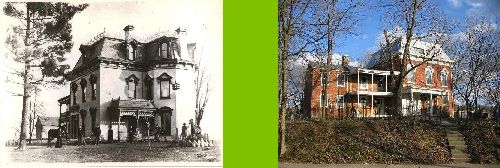I mixed up a batch of lime putty from my bag of masons lime. Using an empty pail of kitty litter half filled with water, I added lime until the mix became putty like. It sucked up about half the 50 lb. bag and filled the pail to about 3/4 of its volume. I then let it sit for a day. Masons lime (bagged lime) does not produce the best possible quality of lime putty, or so I have read.
Quality lime putty is made when calcium oxide (from heating limestone)is added to water to produce calcium hydroxide also known as slaked lime. It is best when left to mature for at least one month. You can buy lime putty this way if you are trying to have super smooth plaster walls. Bagged lime is dry calcium hyroxide.
When lime putty cures it reacts with carbon dioxide in the air to form calcium carbonate which is limestone. The reason bagged lime is not the best thing to use for lime putty is because an unknown amount of the lime will have already reacted with carbon dioxide before the putty is made.
After a day my putty was more like "Top Coat" in consistency. This is good when adding sand to it but wasn't so good when experimenting with a final coat. Lime putty certainly creates a stickier plaster and held to the ceiling much better than the mix as you go method that I used several days ago.
With 90 degree weather my plaster is drying very quickly and when using my lime putty it is causing shrinkage cracks in the finish coat.
When applying plaster for patching I found the trowel most useful. As the top coat sets a little you can trowel it smooth or even rub it smooth with a wooden block. The key here is that you can get it flat and smooth in one day. Joint compound takes three or four days with drying time. The plaster requires more attention and addition of more putty to smooth out low spots.
Since my putty is somewhat fluid, I am assuming that caused the shrinkage cracks that I viewed on Sunday after a day of curing. The good news is that I used a standard 4" scraper to apply a "slurry" of lime putty to the wall surface and this filled all the cracks nicely. I can report back the results in a day or so.
I have been asked to describe how to make plaster look like subway tile. Since I don't need to do this I can't answer the question but I can say that I did use my scraper to carve a line into the firm but still damp lime putty finish coat and it seemed to work quite well. So I would recommend to that reader that they experiment with their own lime putty until they are comfortable with the result. I am just trying to patch some walls well enough to apply joint compound so that I can smooth out the textured walls. If my walls were smooth plaster, I would say that the patches are done, but since the walls all around the patches are textured, the patches are the currently the smoothest part of the wall!
Considering that I have never used lime putty before, I can't complain. The walls will certainly be patched adequately enough to smooth with joint compound. In a few years when I get around to it I will re-plaster the walls in the basement and whitewash them, so it is good that I start learning this stuff now!
I still have to buy drywall to do the drywall patches and to date I still haven't bought any plaster of paris to add to the lime plaster, I don't think I am going to need it. Speaking of getting plastered, I've run out of beer.....

No comments:
Post a Comment